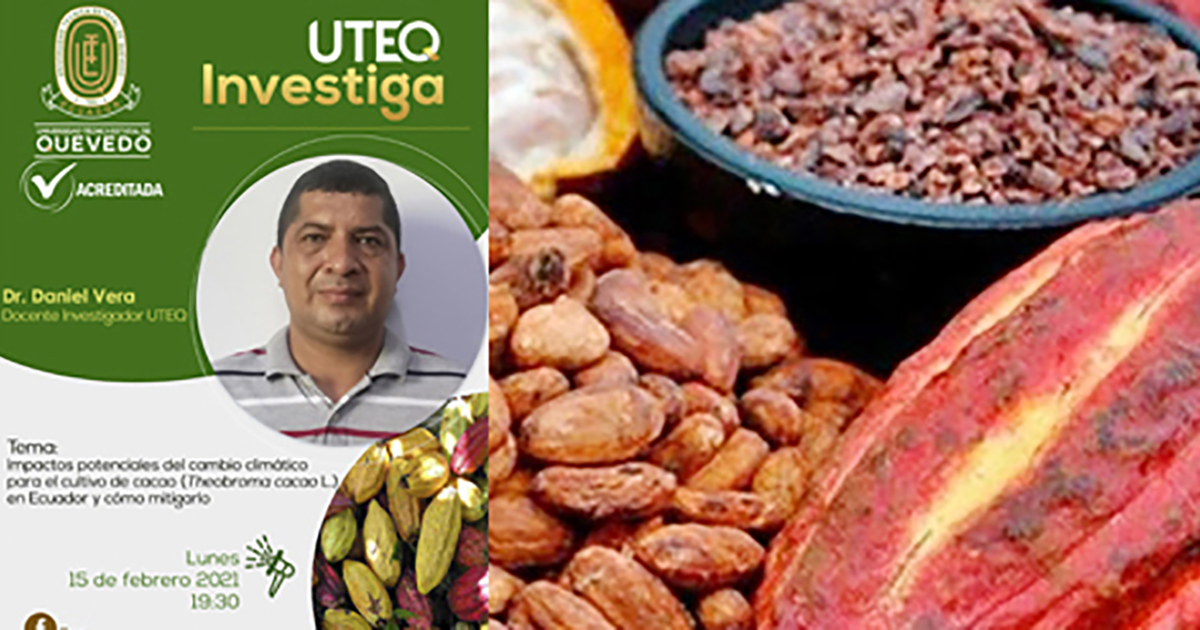Potential impacts of climate change for cocoa cultivation in Ecuador and how to mitigate it
Published on 15 from February from 2021

For Ecuador in particular, studies of extreme weather index trends over the last 40 years show no change in maximum temperature indexes.
Although absolute maxima can exceed the limits that decrease cocoa photosynthesis.
The frequency with which these temperatures occur has remained constant over the last 40 years. On the contrary, positive trends have been observed for minimum temperature indices, showing that minimum temperatures are rising, as well as the frequency of warm nights, is one of the conclusions of the research project of Dr. Daniel Vera Avilés, professor at UTEQ..
What are the climate projections for Ecuador?
With respect to future climate projections for Ecuador, there are few projected changes in the variables of average annual temperature, average maximum and average minimum for the period 2011-2040. In the specific case of cocoa, a summary of the pathogens that affect cocoa and the conditions that favour their development is presented, illustrating the complexity of the pathosystem, highlighting the characteristics of the diseases caused by Phytophthora spp. species.
What about temperature?
Temperature has important effects on the growth of Phytophthora species. Higher minimum temperatures, as reported for all cocoa growing areas, act against the establishment and development of Phytophthora spp. which requires a thermal shock in its cycle, moving from a low morning temperature to a higher temperature as the day progresses, therefore it is very likely that, in current and future scenarios, this disease will not be epidemic.
What is zoning?
Crop zoning is considered to be of high importance in order not to promote cocoa planting in marginal areas. The zoning strategy should also include the control of the expansion of cocoa plantations on the flanks of the Andes.
What is the conclusion of the project and research?
Research on post-harvesting and investments in more centralised harvesting of cocoa beans for more uniform fermentation and drying are recommended.
Genetic improvement was identified as the most important strategy for adaptation of cocoa cultivation to the effects of climate change.
In addition, there is a high vulnerability factor in the cocoa production sector, as production at national level depends mostly on one clone.
The recommendations on crop management focus on the implementation of ASAC (climate-adapted sustainable agriculture) practices, such as soil cover, agroforestry, irrigation optimisation, nutrition, development of climate early warning systems, with the aim of relating phenology, productivity and incidence of pests and diseases to the development and changes in climate variables. For example: Both the public and private sectors have experiences to prioritise practices with potential for scaling up, but there is a need for systematisation and better communication on initiatives.

